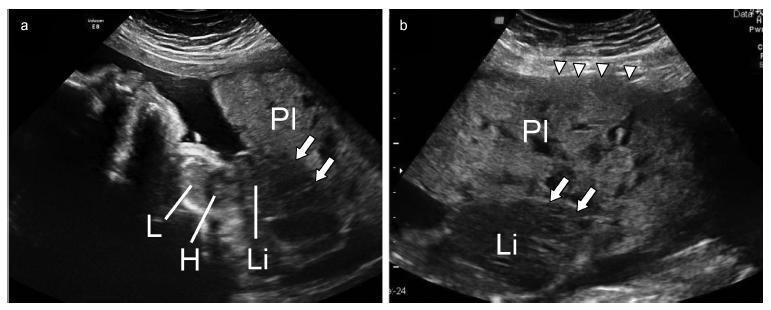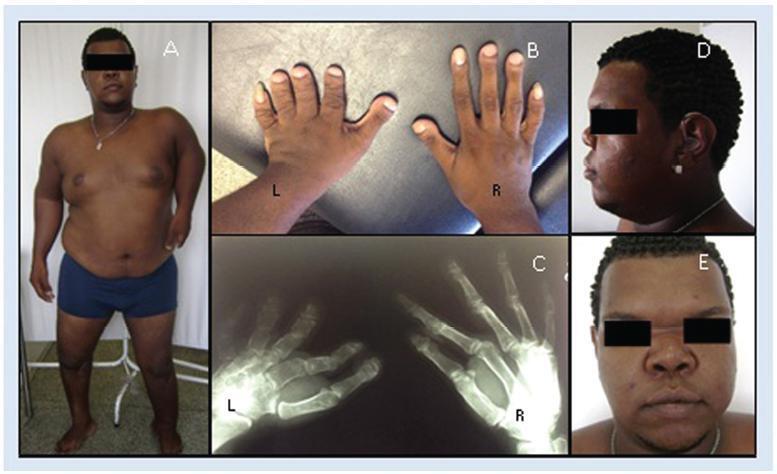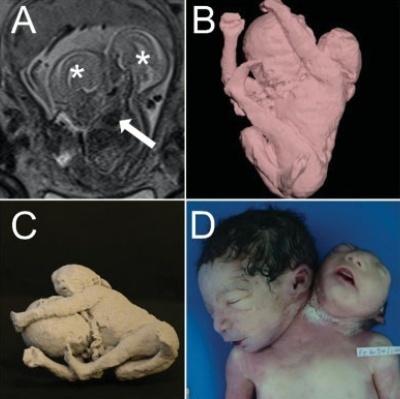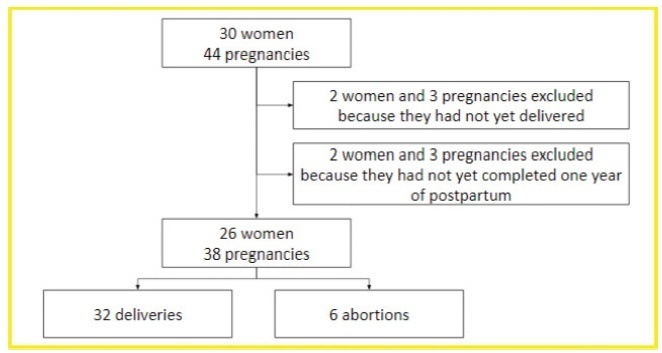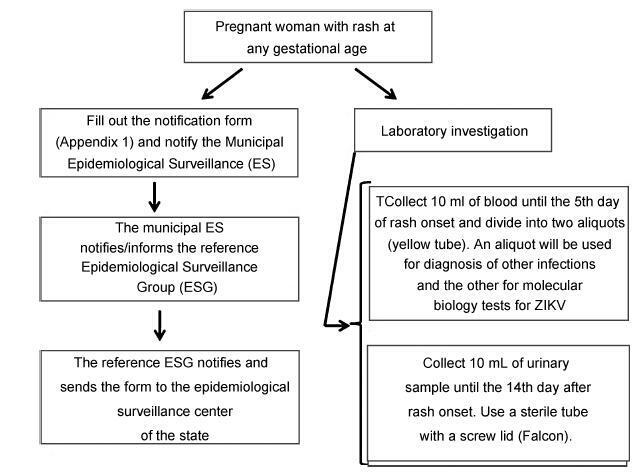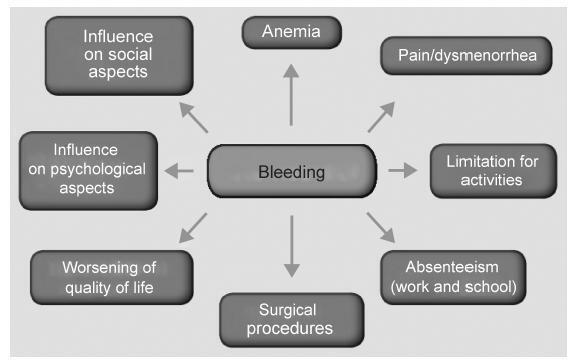-
Original Article10-13-2000
Variations in the Body Mass Index in Users of Hormone Replacement Therapy
Revista Brasileira de Ginecologia e Obstetrícia. 2000;22(4):229-233
Abstract
Original ArticleVariations in the Body Mass Index in Users of Hormone Replacement Therapy
Revista Brasileira de Ginecologia e Obstetrícia. 2000;22(4):229-233
DOI 10.1590/S0100-72032000000400007
Views131See morePurpose: to evaluate the effects of hormone replacement therapy on the body mass index of postmenopausal women. Methods: for this purpose, 166 users and 136 non-users of hormone replacement were evaluated retrospectively during a period of three years. All women were assisted at the Menopause Outpatient Clinic of CAISM – UNICAMP, where the variations in this parameter were evaluated at the end of each year in relation to the initial parameters. The data analysis was performed through chi² test, Student’s t test, and Mann-Whitney test. Results: we observed no significant variations in the body mass index, when comparing users and non-users during the three years of observation. Conclusion: hormone replacement therapy did not produce changes in this parameter in women properly assisted during its use.
-
Original Article10-13-2000
Glove Perforation during Gynecologic Surgeries
Revista Brasileira de Ginecologia e Obstetrícia. 2000;22(4):225-228
Abstract
Original ArticleGlove Perforation during Gynecologic Surgeries
Revista Brasileira de Ginecologia e Obstetrícia. 2000;22(4):225-228
DOI 10.1590/S0100-72032000000400006
Views108Purpose: to analyze the frequency of glove perforation during gynecologic surgeries. Methods: a prospective study of 454 gloves used in 65 surgeries by the water pressure method. Results: of a total of 454 gloves, 54 (11.9%) had perforations. Comparison with the control group showed p<0.05 (chi² test), 1 (1.7%) perforation in 60 gloves tested. Of the total of gloves used in 65 surgeries, 29 (44.6%) had perforations, 44 (81%) had one perforation and 10 (19%) had more than one perforation. The two most common sites of perforations were the index finger, 20 (29.5%) and the thumb, 14 (25.9%). Perforation was predominant in the left hand (72.1%). The surgeons were the members of the team with the greatest number of glove perforations. Total hysterectomy was the most frequent surgery in which glove perforations occurred (50% of the cases). Conclusion: the glove perforations occurred with relatively high frequency during gynecologic surgeries. The index finger of the left hand proved to be the most affected region. Among the members of the team, the highest percentage of glove perforations occurred in those of the surgeons. Total hysterectomy had the highest perforation rate.
Key-words Glove perforationGynecologic surgerySee more -
Original Article10-13-2000
Ambulatory Blood Pressure Monitoring: Comparison of the Blood Pressure Variability in Normotensive and Hypertensive Pregnant Women
Revista Brasileira de Ginecologia e Obstetrícia. 2000;22(4):209-216
Abstract
Original ArticleAmbulatory Blood Pressure Monitoring: Comparison of the Blood Pressure Variability in Normotensive and Hypertensive Pregnant Women
Revista Brasileira de Ginecologia e Obstetrícia. 2000;22(4):209-216
DOI 10.1590/S0100-72032000000400004
Views103See morePurpose: to observe the circadian pattern of blood pressure variation in normotensive and hypertensive pregnant women, assessing the occurrence of nocturnal blood pressure decrease, as well as the compliance with the method and possible complications. Methods: the blood pressure measurement was carried out in seventeen normotensive and fourteen hypertensive pregnant women at the Hospital das Clínicas of UFMG. Blood pressure was measured on two different occasions during gestation using the oscillometric technique to compare both groups. Results: in both groups nocturnal decrease in blood pressure as well as an increase in pressure levels was observed as pregnancy advanced. No significant complications were seen and they did not interfere with compliance which was 100%. Conclusions: the ambulatory blood pressure measurement is useful to evaluate pressure variation in normotensive and hypertensive pregnant women confirming the gradual increase in blood pressure throughout pregnancy and the nocturnal physiologic decrease which does not depend on maternal pressure levels.
-
10-13-2000
Predição da acidose no nascimento em gestações com diástole zero ou reversa à dopplervelocimetria das artérias umbilicais
Revista Brasileira de Ginecologia e Obstetrícia. 2000;22(1):56-56
Abstract
Predição da acidose no nascimento em gestações com diástole zero ou reversa à dopplervelocimetria das artérias umbilicais
Revista Brasileira de Ginecologia e Obstetrícia. 2000;22(1):56-56
DOI 10.1590/S0100-72032000000100012
Views55Predição da Acidose no Nascimento em Gestações com Diástole Zero ou Reversa à Dopplervelocimetria das Artérias Umbilicais […]See more -
10-13-2000
Mamografia, ultra-sonografia e ressonância magnética na avaliação da ruptura de próteses mamárias de silicone em pacientes assintomáticas: achados com correlação cirúrgica
Revista Brasileira de Ginecologia e Obstetrícia. 2000;22(1):56-56
Abstract
Mamografia, ultra-sonografia e ressonância magnética na avaliação da ruptura de próteses mamárias de silicone em pacientes assintomáticas: achados com correlação cirúrgica
Revista Brasileira de Ginecologia e Obstetrícia. 2000;22(1):56-56
DOI 10.1590/S0100-72032000000100013
Views71Mamografia, Ultra-Sonografia e Ressonância Magnética na Avaliação da Ruptura de Próteses Mamárias de Silicone em Pacientes Assintomáticas: Achados com Correlação Cirúrgica […]See more -
10-13-2000
Nível plasmático de tamoxifeno e resposta tumoral de pacientes com câncer avançado de mama
Revista Brasileira de Ginecologia e Obstetrícia. 2000;22(1):55-55
Abstract
Nível plasmático de tamoxifeno e resposta tumoral de pacientes com câncer avançado de mama
Revista Brasileira de Ginecologia e Obstetrícia. 2000;22(1):55-55
DOI 10.1590/S0100-72032000000100010
Views65Nível Plasmático de Tamoxifeno e Resposta Tumoral de Pacientes com Câncer Avançado de Mama […]See more -
10-13-2000
Efeito de uma ação educativa sobre a conduta dos profissionais de saúde da rede de atenção primária em relação às doenças de transmissão sexual
Revista Brasileira de Ginecologia e Obstetrícia. 2000;22(1):55-55
Abstract
Efeito de uma ação educativa sobre a conduta dos profissionais de saúde da rede de atenção primária em relação às doenças de transmissão sexual
Revista Brasileira de Ginecologia e Obstetrícia. 2000;22(1):55-55
DOI 10.1590/S0100-72032000000100011
Views65Efeito de uma Ação Educativa sobre a Conduta dos Profissionais de Saúde da Rede de Atenção Primária em Relação às Doenças de Transmissão Sexual […]See more -
Original Article10-13-2000
Clinical and metabolic aspects of postmenopausal women treated with tibolone
Revista Brasileira de Ginecologia e Obstetrícia. 2000;22(1):37-41
Abstract
Original ArticleClinical and metabolic aspects of postmenopausal women treated with tibolone
Revista Brasileira de Ginecologia e Obstetrícia. 2000;22(1):37-41
DOI 10.1590/S0100-72032000000100007
Views101See morePurpose: to evaluate the effects of tibolone on climacteric symptoms and clinical and metabolic variables. Methods: thirty-four postmenopausal women were treated orally with 2.5 mg tibolone daily for 48 weeks and evaluated as to climacteric complaints, clinical aspects such as weight and blood pressure and lipid profile (total cholesterol, HDL-c, LDL-c, VLDL-c and triglycerides). Results: a significant improvement of climacteric complaints was demonstrated by a significant decrease in the Kupperman index (p<0.001) and the mean number of hot flushes (p<0.001) from the first month of treatment onwards. There was a significant decrease in total cholesterol, triglycerides and VLDL-c (p<0.001). The LDL-c levels presented a slight decrease (not significant). The HDL-c levels showed a significant decrease at week 24. However these levels returned to baseline levels at week 48. With regard to the vital signs no change in body weight and blood pressure was measured. The side effects were mild and temporary, vaginal bleeding, nausea and edema being the most common. Conclusion: tibolone may be considered a safe and efficient option to treat climacteric symptoms in postmenopausal women without significant impact on lipid profile.
Search
Search in:
Tag Cloud
Pregnancy (252)Breast neoplasms (104)Pregnancy complications (104)Risk factors (103)Menopause (88)Ultrasonography (83)Cesarean section (78)Prenatal care (71)Endometriosis (70)Obesity (61)Infertility (57)Quality of life (55)prenatal diagnosis (51)Women's health (48)Maternal mortality (46)Postpartum period (46)Pregnant women (45)Breast (44)Prevalence (43)Uterine cervical neoplasms (43)



